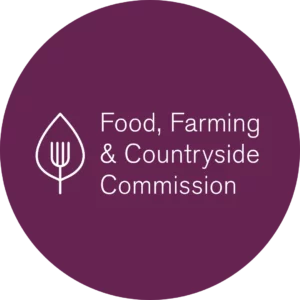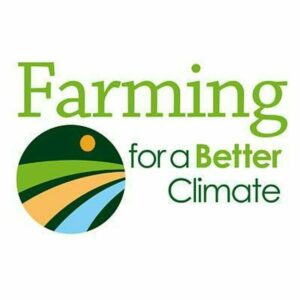This section includes additional resources to help you through designing and implementing a project plan and selling ecosystem services on nature markets. These resources include baselining services, guidance on sustainable farming practices, relevant public policy documents, podcasts and webinars.
If you have additional resources you would like us to include in this section, please email us at [email protected]
Environmental markets – the NFU’s 5 key principles
The NFU has been exploring the scope of environmental markets as a potential source of diversified income for members. At the end of 2021, it established 5 key principles necessary for successful environmental markets. These principles are underpinned by detailed policy recommendations.

Natural Capital Markets: What farmers and policy makers need to know
This report explores some of the opportunities and risks of natural capital markets from a farmer’s perspective, and to signpost appropriate ways ahead. It sets out to explain a complex landscape and the barriers that are currently preventing significant levels of take-up from farmers – particularly smaller farmers. It concludes that the pressing challenge is to find a balance between public and private finance.

Carbon Markets
AHDB has developed a set of resources relating to carbon markets, including why carbon markets matter to farm businesses, how they work, and how can farmers get involved.

Guidance for Landlords and Tenants for Entering Environmental Agreements
Joint guidance produced in partnership between the Country, Land and Business Association and the Tenant Farmers Association on engaging in environmental markets in the context of farm tenancies. The document outlines the key principles, agreed between the two organisations to help initiate conversations between tenants and landlords a bout entering into environmental agreements.

Farmers Weekly Transition Hub
The Farmers Weekly Transition Hub offers articles, podcasts and webinars focused on the opportunities and challenges related to transitioning farming to become more sustainable. Topics include ways to benefit from improving biodiversity, approaches for decreasing GHG emissions, improving resilience in livestock systems and incorporating trees into farms to improve carbon sequestration.

Farm Carbon Toolkit
The Farm Carbon Toolkit provides resources for farmers to measure and monitor emissions and sequestration on their farm and offers guidance to tackle greenhouse gas emissions on farms. The Farm Carbon Calculator is a free tool farmers can use to calculate their emissions while the Toolkit offers guidance to improve their carbon footprint.

Carbon Calculators: What to ask and how to choose
The AHDB offers guidance on choosing an appropriate carbon calculator for your farm, including the practical and technical questions a farmer should ask to help them choose and some of the most popular tools currently available.

Greenhouse gas calculators – where to start?
The NFU reviews the three most widely used carbon calculators: Agrecalc, Cool Farm Tool, Farm Carbon Calculator.

Understanding carbon footprinting for cereals and oilseeds
This downloadable guide provides an introduction to carbon footprinting, explaining what information is used to calculate one and what can be done to reduce greenhouse gas emissions.

Are you ready to sell biodiversity units?
This short info sheet offers basic guidance on selling Biodiversity Net Gain credits in England. It guides landowners through identifying buyers and registering their land and includes links to other helpful resources on stacking and bundling and creating a conservation covenant.

Agrecalc
Agrecalc is a farm carbon calculator – a software solution for carbon emission calculation, benchmarking and mitigation.

Ecometric
Ecometric is a soil carbon measurement and monitoring company which uses a combination of traditional soil sampling and remote sensing data to measure soil carbon stocks.

Sandy by Trinity Agtech
Developed by software specialist Trinity AgTech, Sandy is a digital assistant that helps farmers assess and monitor their natural capital. It does this by calculating, carbon emissions and sequestration, biodiversity and water stewardship of all the main farming enterprises, including woodland and glasshouse production. Farmers can then plan using scenarios to understand which actions are going to best improve environmental performance and generate carbon credits. Trinity Natural Capital Markets is a platform that offers additional biodiversity and water protection co-benefits, and biodiversity tokens as these markets develop.

Natural Capital Markets What farmers and policymakers need to know (Webinar)
In this webinar, panelists discuss the report put out by the Food, Farming and Countryside Commission which explores the implications of emerging natural capital markets on farming and land management in the UK. The webinar’s host, ffinlo Costain, Chief Editor of 8point9.com, is joined by: Professor Fergus Lyon – author of the report – and director of the Centre for Enterprise, Environment and Development Research at Middlesex University. Lucy Bates -co-lead for the Farming Transition Programme at the Food, Farming and Countryside Commission. And Charlie Davis, a partner at Sylvestris Land Management, a land and rural business consultancy specialising in environmental land management.

Environmental Advisors Registry
BASIS is an independent standards setting and auditing organisation for the pesticide, fertiliser and allied industries. BASIS provides training and certification of Farm Environment Advisors including FACTS qualification for nutrient management planning. The register allows farmers to search for farm advisors in their area with expertise in specific areas such as livestock management, biodiversity, woodland or energy and resource use.

5 ways to generate income from carbon farming
This guides farmers through five ways of generating income from carbon farming including both public and private funding schemes.

Environment Bank's Habitat Banks
Environment Bank is leasing parcels of land to co-create biologically diverse habitats. A Habitat Bank is a parcel of land biodiversity can be improved.

Natural Flood Management Measures: A practical guide for farmers
This guide introduces farmers to Natural Flood Management measures they may want to take on their farm, including their benefits for flood prevention and agricultural management, estimated costs and potential funding sources.

Farming for a Better Climate: Practical Guides
These guides give practical information on sustainable farming practices covering topics such as:
- Soil Sampling
- Nutrient Management
- On-farm energy production (solar, small scale hydro, anaerobic digestion, wind)
- Introducing herbal leys and cover crops

The Peatland Code Process: From Site Identification to Validation
This is a ‘How to’ guide for navigating the Peatland Code, written by Rachel Harvey, who worked with the Bwlch Y Groes project on their peatland restoration project.
